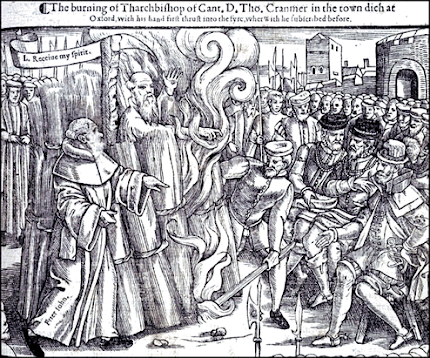". . . Nor was the covenant of works the first and most ancient covenant; the covenant of grace, as an eternal compact, was before that . . ." -- John Gill
[Revelaton 13:8].
I have considered the covenant of grace in a former part of this work, as it was a compact in eternity, between the three divine persons, Father, Son, and Spirit; in which each person agreed to take his part in the economy of man's salvation: and now I shall consider the administration of that covenant in the various periods of time, from the beginning of the world to the end of it. The covenant of grace is but one and the same in all ages, of which Christ is the substance; being given for "a covenant of the people", of all the people of God, both Jews and Gentiles, who is "the same" in the "yesterday" of the Old Testament, and in the "today" of the New Testament, and "for ever"; he is "the way, the truth, and the life", the only true way to eternal life; and there never was any other way made known to men since the fall of Adam; no other name under heaven has been given, or will be given, by which men can be saved. The patriarchs before the flood and after, before the law of Moses and under it, before the coming of Christ, and all the saints since, are saved in one and the same way, even "by the grace of our Lord Jesus Christ"; and that is the grace of the covenant, exhibited at different times, and in divers manners. For though the covenant is but one, there are different administrations of it; particularly two, one before the coming of Christ, and the other after it; which lay the foundation for the distinction of the "first" and "second", the "old" and the "new" covenant, observed by the author of the epistle to the Hebrews (Heb. 8:7,8,13; 9:1,15; 12:24), for by the first and old covenant, is not meant the covenant of works made with Adam, which had been broke and abrogated long ago; since the apostle is speaking of a covenant waxen old, and ready to vanish away in his time: nor was the covenant of works the first and most ancient covenant; the covenant of grace, as an eternal compact, was before that; but by it is meant the first and most ancient administration of the covenant of grace which reached from the fall of Adam, when the covenant of works was broke, unto the coming of Christ, when it was superseded and vacated by another administration of the same covenant, called therefore the "second" and "new" covenant. The one we commonly call the Old Testament dispensation, and the other the New Testament dispensation; for which there seems to be some foundation in 2 Corinthians 3:6,14 and Hebrews 9:15 these two covenants, or rather the two administrations of the same covenant, are allegorically represented by two women, Hagar and Sarah, the bondwoman and the free (Gal. 4:22-26), which fitly describe the nature and difference of them. And before I proceed any farther, I shall just point out the agreement and disagreement of those two administrations of the covenant of grace.
A Body
of Doctrinal Divinity
Book
4—Chapter
1




2 comments:
"An eternal compact". Great stuff. The grace of God preempting our great sin. John Gill, just awesome.
Amen, Rubin. I thought this short quote shows clearly that the Gospel of the covenant of grace is taught in both the OT and the NT. Most dispensationalists and Arminians don't get this.
Post a Comment